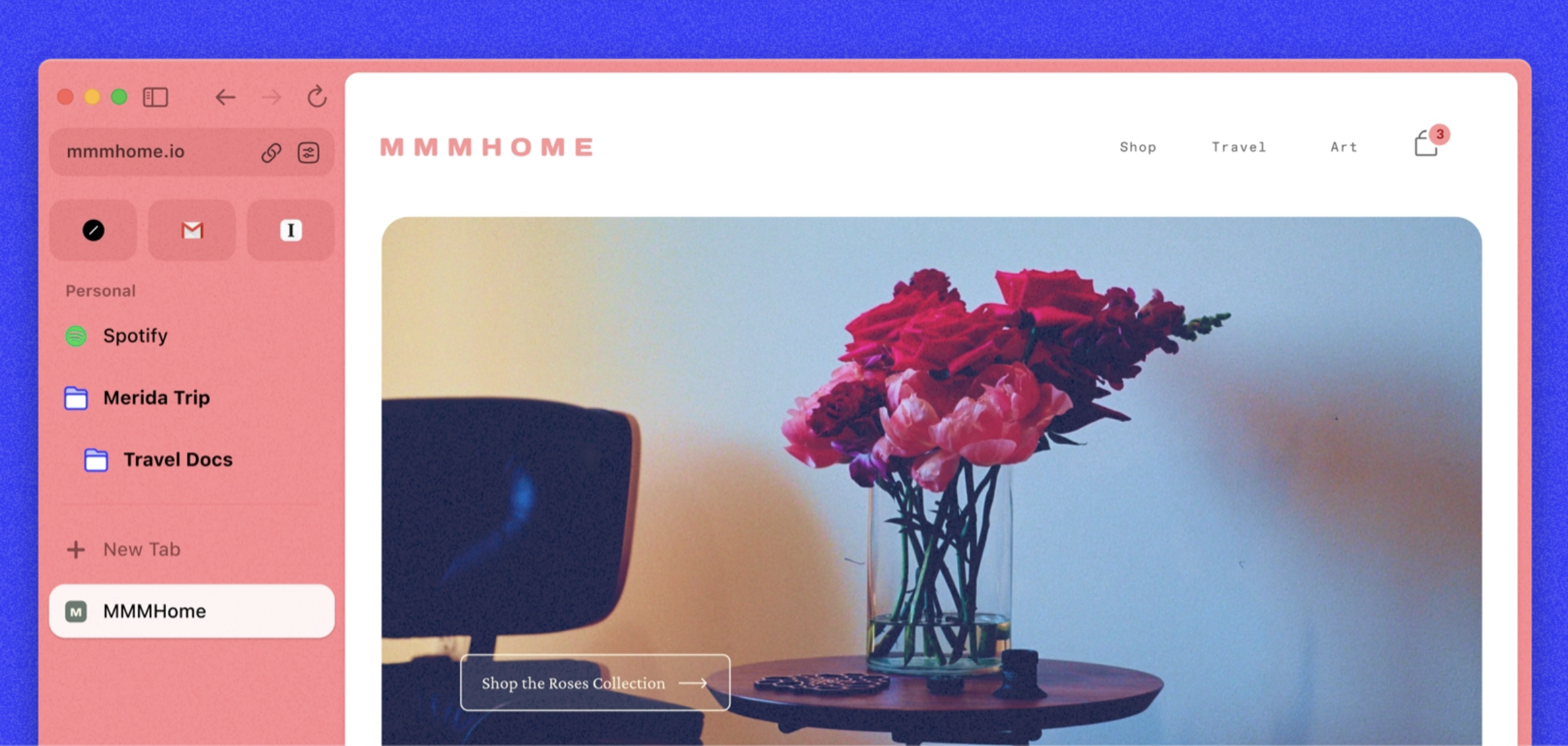The last decade has been a wild ride for browsers. From the days of Internet Explorer and early Firefox to the dominance of Chrome, we've seen an industry that seemed, for a while, to have reached a quiet plateau. But that’s no longer true. Today, a new wave of browsers like Arc, SigmaOS, and Comet is shaking things up, challenging what we thought a browser should be.
And yet, here I am — still on Chrome. Not because it’s perfect, but because it’s… easy. The truth is, I’m comfortable here. But as innovation surges, I can’t help but wonder: is staying comfortable holding me back?
The Era of Chrome and the Power of Habit
For years, Chrome has been my default. It’s familiar, reliable, and most importantly, synced. Bookmarks, saved passwords, browsing history — all of it follows me from my laptop to my phone to my work computer. It’s seamless, and I don’t have to think about it.
Yes, there are faster browsers. Yes, there are more private browsers. But none of them match the frictionless convenience that Google’s ecosystem provides. At the end of the day, Chrome’s strength isn’t just its speed or stability — it’s the way it fits effortlessly into my workflow.
The Rise of the New Browsers
Then along came Arc, SigmaOS, Comet, and others — browsers that don’t just iterate on the same formula but completely rethink what browsing looks like. Arc, for example, introduces a completely fresh interface with sidebars, spaces, and built-in productivity tools. SigmaOS goes further, positioning itself as a browser built for work, with task management baked right in.
They’re fun. They’re exciting. They feel new in ways Chrome hasn’t in years. But that freshness comes at a cost: learning curves, feature adjustments, and sometimes, small but frustrating limitations — like a lack of native syncing with Google services.
The Friction of Switching
Here’s the real problem: moving to a new browser is never as smooth as it promises to be. Sure, you can import your bookmarks and passwords in seconds. On day one, everything feels perfect — almost identical to Chrome. But by day five or ten, the cracks start to show. New browsing history? Lost. Passwords saved after the import? Stuck in one browser. Permissions granted or denied? Not synced anywhere else.
What I want is simple: to switch browsers the way I switch tabs, without losing the context of my digital life. But in today’s ecosystem, that dream is still out of reach.
It’s Not Just Browsers — It’s Everything
This isn’t a problem exclusive to browsers. The same thing happens with applications. Take my Mac setup: I’ve been a loyal Alfred user for over a decade. I even paid for the Powerpack years ago. Along comes Raycast — cleaner, more modern, with a growing community and slick integrations. On paper, it’s a no-brainer to switch.
But here’s the thing: my entire workflow is built into Alfred. My custom scripts, my hotkeys, the little tweaks I’ve made over the years — they’re part of my muscle memory now. Abandoning that feels less like upgrading and more like losing a piece of myself. And there’s a weird nostalgia to it, too, maybe because I grew up in a time when tech cycles moved slower. Consoles came out once every five or six years, not every six months. Phones lasted for years. Apps didn’t iterate weekly. I think part of me still craves that stability.
The Pace of Change
Innovation today moves at a dizzying speed. Every week, there’s a new app or browser that promises to do everything better, faster, and cleaner. It’s exciting — but it’s also exhausting. The constant pressure to migrate, to rebuild workflows, to stay “current” can take the joy out of the very innovation that makes tech fun in the first place.
And yet, I can’t help but feel drawn to it. I want to try Arc. I want to see what SigmaOS feels like. But I also want the safety net of knowing I can jump back to Chrome without losing a single thing.
The Dream: A Universal Profile
If I could ask for one thing, it would be this: a universal profile. One profile — independent of any company or platform — that stores my browsing history, my passwords, my app preferences, my digital fingerprints. A standard that every browser, every app, could plug into. Imagine being able to open a fresh install of Arc or Chrome or Raycast, sign in with that universal profile, and have your entire context waiting for you.
It wouldn’t just make switching easier; it would make innovation more accessible. People could experiment freely without the fear of losing the time, effort, and habits they’ve built over years.
Looking Ahead
We’re not there yet. Right now, you have to pick your lane and commit to it, whether it’s Chrome, Arc, Firefox, or something else. And maybe that’s fine — maybe that friction is what keeps things stable. But I can’t help but imagine a future where the tools we use adapt to us, not the other way around.
Until then, I’ll probably keep one foot in Chrome and one foot testing the waters of whatever new browser drops next week. The balance between innovation and comfort isn’t easy, but maybe that tension is what keeps tech evolving.
Final Thoughts
At the end of the day, this isn’t just about browsers or apps. It’s about how we interact with technology in a world that’s moving faster than ever. It’s about nostalgia, convenience, and the quiet hope that one day, we won’t have to choose between what’s familiar and what’s new.
Maybe the answer isn’t picking one or the other — maybe it’s building a future where we can have both.
